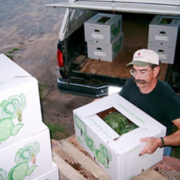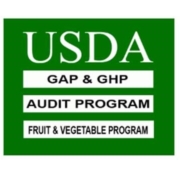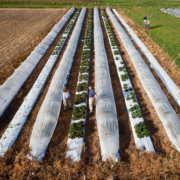More Than a Farm: Setting Your Agribusiness Up for Success
 Print This Post
Print This Post
By Hakeem Holmes, NCAT Agriculture Specialist
Farming—one of the world’s oldest professions—encompasses enterprises that individuals start for multitude of different purposes, whether for desire for self-sufficiency, environmental stewardship, family tradition, or entrepreneurial ventures. Farms, no matter the reason they begin, have all the elements of a complex organization, including people, processes, culture, technology, strategy, structure, and systems. Understanding these elements and ways to ensure they operate at peak performance can determine the success or failure of a farm.
People
The people of a farm are the life that puts everything in motion. Their skills, beliefs, and perspectives are what create and maintain an identity of the farm. Think of the people of the farm as stakeholders, which are anyone who has a vested interest in the farm or may be affected by the activities that take place on the farm. Stakeholders can be found internally such as the employees, management, and leadership or externally like customers, community members, and regulating government entities. Being a successful agribusiness operation takes leadership that implements strategies that includes thoughts and voices from many stakeholders to ensure the farm is serving and collaborating with those who have common interests.
Processes
A process can be defined as a set of interrelated work activities that include specific inputs and value-added tasks that make up a procedure for a specific output. Think of processes on your farm as steps designed to produce products or services. For example, a carton of eggs is a simple product, but the processes behind producing this simple product can be numerous. An important element of any process is a metric that determines its success. To continue with the carton of eggs example, , a process that helps produce that product could be the transportation of the eggs from the nest of the hen to an area to be inspected for quality. A reasonable metric for the success of this process is setting a percentage goal of eggs that arrive undamaged during the relocation process. Metrics associated with a process should be SMART (Specific, Measurable, Attainable, Relevant, and Time Based). Well managed farms have processes documented and are constantly looking for ways to improve those processes to reduce waste, improve profitability, and increase efficiency throughout their operations.
Culture
The culture of an organization is the values, beliefs, and rules that guide the behavior of human relationships with internal and external stakeholders of the organization. A culture should be established in the early stages of your farm operations. An established culture answers questions about your farm such as your mission, vision, goals, and values. Culture holds leadership and employees alike to a standard of excellence that all stakeholders of that organization can agree upon. A strong organizational culture changes people and does not change with people. This means that when the farm transitions from grandparent to grandchild, there is a certain amount of continuity of purpose that remains within the operation.
Technology
Embracing innovation as a part of your farm’s values will encourage you as an agribusiness professional to remain vigilant on current technological trends within your respective agriculture industry niche. Shifts in technology have birthed and ended many farm operations, and it is important to recognize how to implement best practices regarding technology. Farm production for most of human history has been limited to the amount of human labor that was dedicated to the planting, harvesting, and processing of certain agriculture products. Technological advances to ease the labor side of agriculture were few and far between, until the Industrial Revolution and large-scale implementation of machinery in farm operations. Technology in agriculture production is not limited to machinery like tractors and combines, but also irrigation, hoop houses, hydroponics, animal breeding techniques, etc.
Strategy
The strategic planning process is a vital activity that should be implemented and monitored by the organization’s leadership. This process creates the strategy that is used to ensure that the direction of the organization is working towards its mission and vision. A farm’s strategy should include answers on what activities you plan to enact in your organization to maintain internal processes, serve customers, adapt to market forces, and create products and services. The strategic planning process should include leadership from all levels of the organization’s structure. Strategic planning commonly begins with brainstorming about strengths of the organization, opportunities that can be capitalized on based on those strengths, aspirations, or targets that the organization will work towards, and, finally, the results that come from achieving those aspirations. Being strategic includes setting up mechanisms of holding the organization accountable to accomplish these tasks and goals. Timelines, performance indicators, and assignment of duties and responsibilities all hold the organization accountable for the success of the farm.
Structure
Structure describes the division of responsibility and duties throughout the organization. According to the U.S Department of Agriculture, 98% of all farms in the U.S. are family farms, with nearly 90% of those considered small family farms. A small family farm is an agriculture enterprise whose gross cash farm income does not exceed $350,000 annually. Smaller operations may tend to lean towards a more traditional leadership structure where senior members of the family make decisions, although traditional leadership structure can provide stability and consistency. Implementing elements of transformational leadership can assist organizations with the ever-changing environment of the agriculture industry. Transformational leadership embraces employee empowerment by involving all levels in the decision-making process, visionary leadership inspiring and motivating by articulating investments of the organization’s future to stakeholders, emphasizing adaptability and innovation by implementation of technologies or crop diversification, and individual development ensuring leaders and employees invest in the knowledge that will help them perform their responsibilities.
Systems
Business systems are designed to implement processes. Systems ensure that the resources needed for processes to be completed are readily available. Farms employ many systems, including recordkeeping, accounting, transportation, storage, harvesting, marketing, information management, etc. These systems are intended to reduce waste and increase efficiency and profitability.
A farm is more than a person managing the growth, harvest, and sales of plants and animals. It is, in essence, a dynamic and intricate business ecosystem, requiring comprehensive involvement and investment from all stakeholders to ensure its sustained success over the long term. While the central figure managing the day-to-day operations plays a crucial role, the modern farm operates within a complex framework that involves numerous components and interactions. A farm, as a sophisticated business entity, thrives not only on the cultivation of crops and livestock, but also on the cultivation of collaborative relationships and strategic investments that fortify its foundation for long-lasting success.
Related ATTRA Resources:
Business and Marketing Topic Area
Evaluating a Farming Enterprise
Market Gardening: A Start Up Guide
Planning for Profit in Sustainable Farming
This blog is produced by the National Center for Appropriate Technology through the ATTRA Sustainable Agriculture program, under a cooperative agreement with USDA Rural Development. ATTRA.NCAT.ORG.


 USDA photo by Lance Cheung
USDA photo by Lance Cheung
 USDA Photo by Lance Cheung.
USDA Photo by Lance Cheung.




 USDA photo by Ed Ragland.
USDA photo by Ed Ragland.
